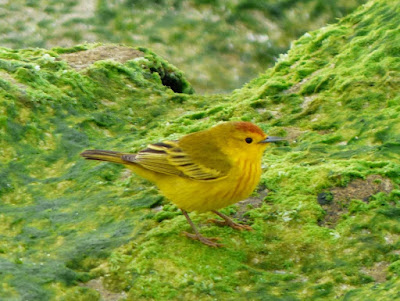Time for another in my sporadic series of Colours in Nature; for the most recent, see here and you can work back from there. Alternatively, go to Labels to the right of this posting, and look for Colours in Nature.
A serious problem I found when putting this mini-series on orange together was to define the colour! Technically it's between yellow and red, but it turned out not to be that straightforward. We all tend to interpret colours somewhat differently - at home there is an ongoing dispute about the distinction between blue and purple - and I'm finding it very hard to draw a line between orange and chestnut/rusty. I think there's probably just a continuum, so I've tended to err on the side of caution and include here only animals (we'll get to plants later) which look to me to be obviously orange. That of course is no guarantee I'll not get into trouble anyway! Ultimately these colour postings are intended simply to be a celebration of organisms and their colours, so don't get too exasperated if a pic doesn't look orange to you - I promise that it does to me! And in time I will definitely do one on rusty-looking animals, when more mammals will get a go (though a few, interestingly primates especially, have made it into this orange series).
Things are compounded by how we've named orange-rusty-red animals too - think of the Red Fox or Red Kangaroo for instance, which some call orange, though I would probably allocate them to the rusty/chestnut department, but few of us would normally call that colour 'red'.
With those provisos, let's start. Orange, like red and yellow as we might imagine, is mostly formed in animals from carotenoids obtained from plants. See here for more on this, but it can be an energetically expensive process, though presumably worth it in order to stand out from the crowd.
Some birds carry 'orange' in their name, making it easy to home in on them.
 |
| Orange-breasted Fruiteater Pipreola jucunda, Mindo Valley, Ecuador. Not a great photo, but a great bird; fruiteaters are cotingas. |
South Africa's Orange-bellied Sunbird is another badge-wearing Orange bird, but my photo of it really is too terrible to publish here or anywhere else!
Other birds which I see pretty unambiguously as orange are labelled rufous too, to further underscore my point.
 |
| Rufous-bellied Euphonia Euphonia rufiventris, canopy tower, Sacha Lodge, Ecuadorian Amazonia. Probably a tanager, but tanager taxonomy's an even more hazardous field than defining orange! |
 |
| Rufous-backed (Oriental Dwarf) Kingfisher Ceyx erithaca, Gomantong Caves, Sabah. |
 |
| White-browed Robin-chat Cossypha hueglini, Entebbe, Uganda, one of the Old World Flycatchers, Muscicapidae. And I will readily acknowledge that this is getting to the yellow-fawn edge of orange. |
Some birds feature a nice orange highlight, often on a yellow background.
 |
| Gilded Barbets Capito auratus, canopy tower, Sacha Lodge, Ecuadorian Amazonia. The New World barbets are separated out now at family level from the Old World ones. |
Other bird body parts than feathers can be orange of course, notably bills and legs.
 |
| Zebra Finches Taeniopygia guttata, central Australia. I never need an excuse to feature Zebbies, an amazing dryland bird which will surely star in its own posting one day. |
Ah well, mysteries are good for us.
I'll continue this next time, by the magic of Blogger, while I'm still in South America; we'll look then at other orange vertebrates.
BACK ON SATURDAY 12 SEPTEMBER






3 comments:
I am surprised that someone hasn't come up with some boundary frequencies that defined orange with borders between the three parts of R O Y, Then I looked up a page about HTML codes and found it really was a great mish-mash. Some colours called orange are in with browns and at least one is in the middle of red!
I hope the next post will feature orang(e)utans!
Martin
Thanks Martin, and I may just be able to help you there. Meantime, g'day from Machu Picchu
Definitely the orange collared lorikeet. T. rubritorquis isn't much help either. They are slightly variable from yellow to deep orange and everything inbetween but never red collared.
Post a Comment